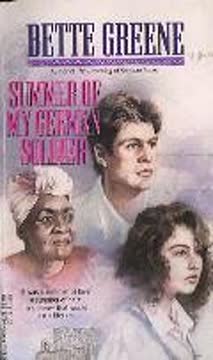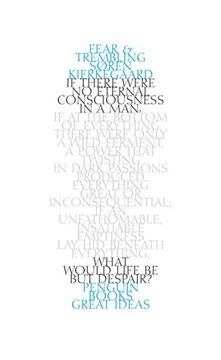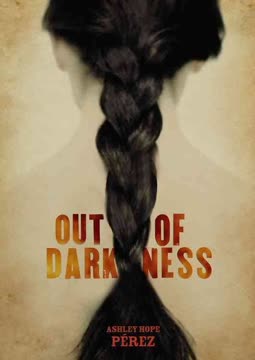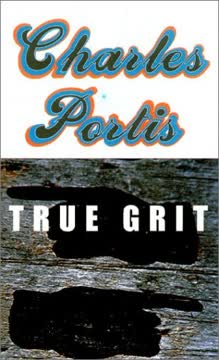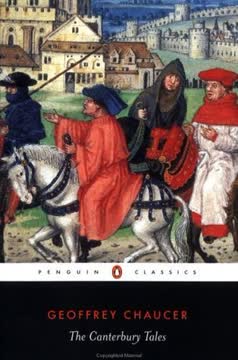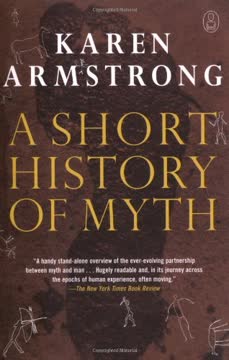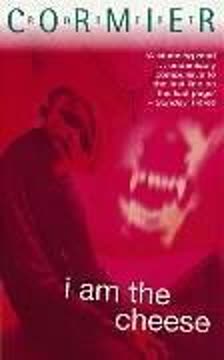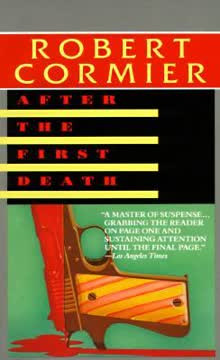Plot Summary
April Fools' Nightfall
On April Fools' Day, four teenage boys break into the Jerome family's home, unleashing a wave of vandalism and violence. The house is trashed, possessions destroyed, and the youngest daughter, Karen, is assaulted and left in a coma. Unbeknownst to the perpetrators, a silent observer—an eleven-year-old boy who calls himself The Avenger—watches from the shadows, vowing to seek revenge for the desecration of the home and its inhabitants. This single night sets off a chain of trauma, guilt, and obsession that will ripple through the lives of all involved.
Shattered Sanctuary
The Jeromes return to a home that is no longer a refuge. Jane, Karen's older sister, is wracked with guilt over a petty argument with Karen earlier that day. The family is left to pick up the pieces, both physical and emotional, as police investigate and neighbors gossip. The sense of safety is gone, replaced by suspicion, fear, and a lingering sense of violation. The house, once a symbol of stability, becomes a daily reminder of what was lost.
The Avenger Watches
The Avenger, a lonely, precocious child, has long watched the Jeromes, feeling a kinship with their family. The attack on their home is, to him, a personal affront. He is methodical, patient, and skilled at blending into the background. As he plots his revenge, he recalls his earlier act of violence—killing a school bully—and the satisfaction it brought. The Avenger's sense of justice is absolute, but his methods are chillingly cold.
Aftermath and Guilt
Jane is haunted by guilt and anger, her friendships strained and her sense of self shaken. Buddy, one of the vandals, is sickened by his own actions, especially his inaction during Karen's assault. He turns to alcohol to numb his shame and confusion, distancing himself from his family and friends. The other boys—Harry, Marty, and Randy—rationalize or ignore their roles, but the event leaves a mark on all of them.
Buddy's Descent
Buddy's home life is unraveling as his parents' marriage collapses. He finds solace in drinking and in the camaraderie of Harry's group, even as he despises their leader's manipulations. Buddy's guilt festers, and he becomes increasingly isolated, unable to confide in anyone. His drinking escalates, and he struggles to maintain the facade of normalcy at school and at home.
Jane's Isolation
Jane withdraws from her friends, feeling contaminated by the attack and the attention it brings. She is haunted by the smell and memory of the ruined house, unable to reclaim her sense of belonging. Her family, too, is fractured—her parents distracted by their own pain, her brother Artie traumatized and acting out. Jane's only solace is in routine and brief moments of connection with odd neighbors.
Family Fractures
Buddy's family is torn apart by his father's affair and subsequent departure. His mother is emotionally absent, and his sister Addy is left to pick up the pieces. The siblings attempt to support each other, but their efforts are clumsy and often end in conflict. The Jeromes, too, struggle to maintain a semblance of normalcy, but the attack has exposed deep vulnerabilities.
The Avenger's First Kill
The Avenger recalls his earlier act of murder—killing a school bully with his grandfather's stolen gun and staging it as a suicide. He is proud of his cunning and the sense of power it gives him. This memory fuels his resolve to punish the vandals who hurt the Jeromes, and he begins to stalk them, waiting for the right moment to strike.
The Key and the Lie
The police investigation stalls until a neighbor's report leads to the arrest of Harry, the ringleader. Harry's defense hinges on a key—Jane's lost house key, which he claims she gave him. The lie casts suspicion on Jane, straining her relationship with her parents and deepening her sense of shame. The truth is more complicated: Harry found the key by chance, but his manipulation leaves Jane feeling betrayed and exposed.
Harry's Confession
Harry confesses to the vandalism, shielding his friends from prosecution. He rationalizes his actions, claiming he was just having fun and that the real damage was accidental. Buddy is both grateful and disgusted, recognizing Harry's self-serving motives. The legal system, eager for closure, accepts Harry's version of events, and the other boys escape consequences. The lie about the key lingers, poisoning Jane's trust.
Love in the Ruins
In the aftermath, Jane and Buddy meet by chance and fall in love, each unaware of the other's connection to the crime. Their relationship is a refuge from the pain of their respective families, but it is built on secrets and denial. As they grow closer, both are haunted by the past—Jane by the attack, Buddy by his guilt. Their love is intense but fragile, threatened by the truth that hovers just out of reach.
The Avenger's Revenge
The Avenger, frustrated by his inability to find the vandals, turns his attention to those he perceives as traitors. He murders his own grandfather, who has grown suspicious, and begins to fixate on Jane, whom he sees with one of the trashers—Buddy. The Avenger's sense of justice warps into a desire for control and punishment, and he begins to plot Jane's abduction.
Jane's Abduction
Lured by a neighbor's plea for help, Jane is kidnapped by The Avenger (Mickey Looney) and held captive in a shed. He reveals his identity and his twisted sense of mission, confessing to previous murders and his intent to kill her for loving a trasher. Jane, terrified but resourceful, manipulates his delusions, buying time until help arrives. The ordeal ends with The Avenger's suicide as police break in.
Truths Unravel
Jane survives her abduction but is left numb and hollow. She learns from The Avenger that Buddy was one of the vandals. When Buddy comes to see her, she confronts him and ends their relationship, unable to reconcile her love for him with his betrayal. Both are left devastated, their brief happiness destroyed by the truth.
The End of Innocence
The Jeromes and Buddy's family attempt to move forward, but the events have left lasting scars. Karen recovers physically but cannot remember the attack. Jane is emotionally vacant, unable to feel anger or love. Buddy spirals further into drinking, haunted by loss and regret. The Avenger's death brings no closure, only a sense of wasted lives and broken trust.
Numb Goodbyes
Months later, Jane and Buddy meet by chance at the mall. Their conversation is polite but distant, stripped of the intimacy they once shared. Both are changed—older, sadder, and marked by what they have endured. The possibility of healing lingers, but the innocence of their love is gone.
Echoes and Escalators
The story ends with the sense that the past cannot be erased. The characters carry their wounds forward, their lives shaped by violence, guilt, and the search for meaning. The mall escalator, once a place of chance encounter and hope, now symbolizes the endless cycle of falling and rising, of loss and the faint possibility of redemption.
Characters
Jane Jerome
Jane is the older sister of Karen and the emotional center of the Jerome family after the attack. She is intelligent, sensitive, and deeply affected by guilt—over her last words to Karen, her lost key, and her inability to protect her family. Jane's journey is one of isolation, longing, and the search for meaning in the aftermath of trauma. Her brief romance with Buddy offers hope, but the revelation of his guilt shatters her trust and leaves her emotionally numb. Jane's development is marked by a loss of innocence and a hard-won resilience.
Buddy Walker
Buddy is one of the vandals, but unlike his peers, he is consumed by remorse. His home life is collapsing, and he turns to alcohol to escape his shame and pain. Buddy's relationship with Jane is both a refuge and a source of further guilt, as he cannot bring himself to confess his role in the attack. His inability to confront the truth leads to self-destruction and the loss of the only person who offered him redemption. Buddy's arc is a study in the corrosive power of guilt and the difficulty of forgiveness.
The Avenger (Mickey Looney)
The Avenger is an eleven-year-old boy in a grown man's body, driven by a black-and-white sense of justice. He is both a victim and a perpetrator, having killed a bully and his own grandfather before targeting Jane. His fixation on the Jeromes and his warped morality make him both pitiable and terrifying. The Avenger's actions are a distorted response to trauma and loneliness, and his ultimate suicide is both a release and a tragedy.
Harry Flowers
Harry is the ringleader of the vandals, skilled at rationalizing his actions and manipulating others. He takes the fall for the crime, protecting his friends, but does so out of self-interest and a desire for control. Harry's confession to Jane about Buddy's role is both an act of cruelty and a twisted attempt at honesty. He embodies the seductive danger of charm without conscience.
Karen Jerome
Karen is Jane's younger sister, whose assault and coma are the catalyst for the novel's events. Her recovery is incomplete—she cannot remember the attack, and her presence is a constant reminder of what was lost. Karen's vulnerability and resilience highlight the lasting impact of violence on individuals and families.
Artie Jerome
Artie is Jane and Karen's younger brother, deeply affected by the attack. He experiences night terrors and withdraws from his usual activities, struggling to process what has happened. Artie's journey mirrors the family's attempt to reclaim a sense of safety and routine.
Addy Walker
Addy is Buddy's younger sister, sharp-tongued and perceptive. She tries to support Buddy through his drinking and their parents' divorce, but her efforts are often rebuffed. Addy's presence highlights the collateral damage of family breakdown and the difficulty of communication.
Mr. and Mrs. Jerome
Jane's parents are devastated by the attack and its aftermath. Mr. Jerome is simmering with anger and helplessness, while Mrs. Jerome is emotionally shattered. Their attempts to restore normalcy are both heroic and futile, as the family's wounds run deep.
Amos Dalton
Amos is a neighborhood boy, socially awkward but ultimately brave. He helps rescue Jane from The Avenger, demonstrating that courage can come from unlikely places.
Mickey Looney (Stallings)
Known as the neighborhood odd-job man, Mickey is revealed to be The Avenger. His dual identity as a harmless eccentric and a dangerous vigilante underscores the novel's themes of hidden pain and the unpredictability of violence.
Plot Devices
Multiple Perspectives and Interwoven Narratives
The novel alternates between the perspectives of Jane, Buddy, and The Avenger, allowing readers to experience the aftermath of violence from victim, perpetrator, and observer. This structure creates empathy for all characters, blurring the lines between good and evil, and highlighting the complexity of guilt, trauma, and forgiveness.
The Lost Key and False Accusation
Jane's lost house key becomes the linchpin of Harry's defense, allowing him to evade harsher punishment and casting suspicion on Jane. This plot device illustrates how minor actions can have outsized effects, and how truth can be manipulated to serve self-interest.
The Avenger's Obsession and Unreliable Narration
The Avenger's fixation on punishing wrongdoers is both a response to his own pain and a commentary on the dangers of unchecked retribution. His perspective is unreliable, shaped by delusion and loneliness, and his actions escalate from observation to murder, culminating in his own death.
Love as Refuge and Ruin
The relationship between Jane and Buddy offers a temporary escape from their respective traumas, but it is built on secrets and denial. When the truth emerges, love becomes another casualty of violence, and both are left more isolated than before.
Foreshadowing and Symbolism
The title's reference to "We All Fall Down" is echoed in the characters' literal and metaphorical falls—from innocence, safety, and love. Blood and stains symbolize the lasting impact of violence, while the recurring smell of vomit and the ruined house represent the difficulty of cleansing trauma.
Analysis
Robert Cormier's We All Fall Down is a psychological thriller that delves into the aftermath of a senseless act of violence, examining its ripple effects on victims, perpetrators, and bystanders. The novel refuses easy answers or clear moral boundaries, instead presenting a world where everyone is complicit, wounded, or both. Through its interwoven narratives, the book explores the corrosive power of guilt, the longing for connection, and the dangers of unchecked retribution. Love offers a brief respite but cannot withstand the weight of secrets and betrayal. The story's conclusion is deliberately unresolved—healing is possible but not guaranteed, and the scars of violence linger long after the headlines fade. In a modern context, the novel remains a powerful meditation on the fragility of safety, the complexity of justice, and the enduring need for empathy in a broken world.
Last updated:
FAQ
Synopsis & Basic Details
What is We All Fall Down about?
- A senseless act's ripple: We All Fall Down chronicles the devastating aftermath of a brutal home invasion and assault on the Jerome family, particularly 14-year-old Karen, who is left in a coma. The story explores how this single act of violence shatters the lives of the victims, the perpetrators, and a disturbed young observer.
- Intertwined lives of trauma: The narrative follows Jane, Karen's older sister, as she grapples with guilt and a fractured family, and Buddy, one of the vandals, who is consumed by remorse and descends into alcoholism. Their paths unexpectedly cross, leading to a fragile romance built on hidden truths.
- Vigilante's twisted justice: Unbeknownst to all, an eleven-year-old boy, Mickey Looney, who calls himself "The Avenger," has been observing the Jeromes and plots a chilling revenge against those he deems responsible, including his own family members and, eventually, Jane.
Why should I read We All Fall Down?
- Unflinching psychological depth: Robert Cormier masterfully delves into the complex psychological states of his characters, exploring the corrosive nature of guilt, the numbing effects of trauma, and the distorted logic of a vigilante. Readers gain a raw, intimate look at how violence reshapes identity.
- Moral ambiguity and difficult questions: The novel refuses to offer easy answers, presenting a world where victims and perpetrators are often intertwined, and justice is elusive. It challenges readers to confront uncomfortable truths about human nature, complicity, and the long-lasting scars of betrayal.
- Masterful narrative tension: Cormier's shifting perspectives and subtle foreshadowing create a gripping, suspenseful read that keeps readers on edge, constantly questioning motives and anticipating the inevitable unraveling of secrets. The story's emotional intensity is both harrowing and deeply resonant.
What is the background of We All Fall Down?
- Suburban veneer shattered: The story is set in the seemingly idyllic suburban towns of Burnside and Wickburg, a backdrop of manicured lawns and shopping malls that starkly contrasts with the violence and psychological turmoil beneath the surface. This setting highlights the fragility of safety even in seemingly secure environments.
- Late 20th-century youth culture: The novel captures elements of late 20th-century American youth culture, with references to video games, malls as social hubs, and teenage rebellion, providing a cultural context for the characters' experiences and their search for identity and escape.
- Exploration of family breakdown: A significant background element is the theme of family dysfunction, particularly Buddy's parents' divorce and the Jeromes' struggle to maintain normalcy after Karen's assault. This societal issue provides a fertile ground for the characters' emotional vulnerabilities and their desperate search for connection.
What are the most memorable quotes in We All Fall Down?
- "We all fall down.": This recurring phrase, originating from the "Ring around the rosy" nursery rhyme, serves as a chilling motif throughout the novel, symbolizing the inevitable descent into chaos, loss of innocence, and the universal vulnerability of humanity to suffering and destruction.
- "You always hurt the one you love.": Spoken by The Avenger, this line reveals his twisted logic for inflicting pain on the Jeromes, whom he claims to love. It encapsulates his fractured psyche and the novel's exploration of how love can be perverted by trauma and a desperate need for connection.
- "I'll stop drinking, Jane. I promise that I won't drink anymore …": Buddy's desperate plea to Jane, made in a moment of vulnerability, highlights his struggle with addiction and his desire for redemption through love. It's a poignant, yet ultimately fragile, promise that underscores the difficulty of escaping one's past.
What writing style, narrative choices, and literary techniques does Robert Cormier use?
- Fragmented, multi-perspective narration: Cormier employs a shifting third-person limited point of view, alternating between Jane, Buddy, and The Avenger. This narrative choice allows for deep psychological insight into each character's internal world, creating empathy and blurring traditional lines between victim and villain, a key aspect of We All Fall Down analysis.
- Sparse, impactful prose: The writing style is direct and unadorned, yet highly evocative. Cormier uses short sentences and vivid imagery to convey intense emotions and brutal realities without sensationalism, making the violence and its aftermath feel stark and immediate.
- Symbolism and thematic echoes: The novel is rich with recurring symbols and motifs, such as the act of "falling," the pervasive "smell" of decay, and the "key" as a symbol of access and betrayal. These elements subtly reinforce the central themes in We All Fall Down like loss of innocence, the persistence of trauma, and the interconnectedness of lives.
Hidden Details & Subtle Connections
What are some minor details that add significant meaning?
- Jane's "pink delirium" motif: Initially, Jane, Patti, and Leslie adopt "pink" as a code word for "cool" and "not hot" with guys, symbolizing their youthful, superficial approach to relationships and life. The subsequent "spoiling" of pink for Jane after the trashing subtly marks her loss of innocence and the end of her carefree girlhood, a crucial detail in Jane Jerome's character analysis.
- The Avenger's grandfather's "inside job" comment: The grandfather's casual remark about his stolen gun being an "inside job" ("If I didn't know any better, I would say it was an inside job") is a chilling piece of dramatic irony. It directly implicates The Avenger, highlighting his cunning and the old man's unwitting proximity to his own killer, a subtle foreshadowing of Mickey Looney's motivations.
- Buddy's father's "ruin": Buddy observes his father's face as "ruin," marked by "small veins... like tiny explosions" and "more flesh... under his eyes." This detailed description of his father's physical and emotional decline due to his affair and divorce subtly foreshadows Buddy's own potential future if he continues his path of self-destruction and addiction, adding depth to Buddy Walker's character arc.
What are some subtle foreshadowing and callbacks?
- "Ring around the rosy" explanation: Harry's cynical explanation of the nursery rhyme, revealing its origins in the Black Plague ("People would get a rosy kind of rash and rubbed themselves with herbs and posies. Then they fell down and died..."), foreshadows the pervasive "falling" and "death" that metaphorically and literally affects the characters, deepening the symbolism in We All Fall Down.
- Jane's "Will you please go have an accident?": Jane's angry, throwaway line to Karen during their argument ("Will you please go have an accident?") becomes tragically ironic when Karen is severely injured. This detail highlights the unforeseen consequences of casual cruelty and the burden of guilt Jane carries, a poignant example of foreshadowing in We All Fall Down.
- The recurring "smell" of decay: Jane's persistent detection of a "soiled scent" or "smell of something spoiled and decayed" in her "restored" room, and later even on herself, subtly symbolizes the lingering, invisible trauma of the trashing. This sensory detail emphasizes that physical repairs cannot erase emotional wounds, a powerful element in Jane Jerome's trauma analysis.
What are some unexpected character connections?
- Amos Dalton's unexpected heroism: The socially awkward, bookish Amos Dalton, often seen as "weird" by Jane and her friends, becomes the unlikely hero who alerts the police to Jane's abduction. His quiet observation and eventual decisive action highlight that courage can emerge from unexpected places, challenging superficial judgments of character.
- Mickey Looney's "Mommy" cry: In his dying moments, Mickey Looney, the terrifying Avenger, cries out "Mommy," looking up at Jane. This unexpected vulnerability reveals the deep-seated, unresolved childhood trauma and loneliness that fueled his delusions, connecting his monstrous actions to a pitiable, childlike core.
- Buddy's mother's "retreat": Buddy's mother's decision to go on a "retreat" for "meditation and prayer" parallels Buddy's own desperate search for escape and peace through alcohol. This connection subtly suggests that both mother and son are grappling with profound emotional pain and seeking different, yet equally valid, forms of solace from their fractured lives.
Who are the most significant supporting characters?
- Addy Walker, Buddy's moral compass: Addy, Buddy's younger sister, serves as a pragmatic and often blunt voice of reason. Her attempts to confront Buddy about his drinking and articulate the emotional toll of their parents' divorce ("sins of omission") make her a crucial, albeit often unheeded, moral and emotional anchor for Buddy, central to Buddy Walker's family dynamics.
- Amos Dalton, the observant outsider: Amos, the quiet, book-loving neighbor, initially appears as a minor, awkward figure. However, his keen observation of Mickey Looney and his decisive action in reporting Jane's abduction elevate him to a pivotal role, demonstrating that even the most overlooked individuals can possess significant courage and impact the narrative's turning points.
- Mr. Jerome, the struggling patriarch: Jane's father, initially portrayed as a "Mister Good Guy," becomes a symbol of shattered authority and helplessness in the face of the trashing and Karen's coma. His simmering anger, his desperate attempts to protect his family, and his eventual accusation of Jane reveal the immense pressure and emotional toll the events take on him, offering insight into Mr. Jerome's motivations.
Psychological, Emotional, & Relational Analysis
What are some unspoken motivations of the characters?
- Buddy's need for absolution: Beyond the explicit guilt over the trashing, Buddy's intense desire for Jane's love is implicitly driven by a subconscious need for absolution and a chance to redeem himself. His promise to stop drinking is less about self-improvement and more about clinging to Jane as his "sunshine" and a means to escape his past, a key aspect of Buddy Walker's motivations.
- Jane's pursuit of normalcy: Jane's initial efforts to restore her room to "pure" white and her later emotional numbness are unspoken attempts to regain control and erase the trauma. Her desire for Buddy's love is also a longing for a return to a pre-trashing innocence and normalcy, a way to fill the "hole inside of her," as explored in Jane Jerome's psychological analysis.
- Harry's craving for power and control: Harry's decision to take the blame for the trashing, while seemingly noble, is subtly motivated by a desire to maintain control over his "stooges" and the narrative. His "clincher" about the key allows him to manipulate the legal system and the Jeromes, demonstrating his deep-seated need for dominance and influence, a core element of Harry Flowers' character analysis.
What psychological complexities do the characters exhibit?
- The Avenger's age regression and split identity: Mickey Looney's delusion of being "The Avenger," an eleven-year-old boy, is a profound psychological defense mechanism. This age regression allows him to compartmentalize his violent acts from his "normal" self, enabling him to commit murder while maintaining a childlike innocence in his own mind, a central complexity in Mickey Looney's psychology.
- Jane's post-traumatic emotional numbness: After her abduction and the revelation about Buddy, Jane experiences a profound emotional void, feeling "nothing. Numb. Vacant." This isn't just sadness but a protective psychological shutdown, a coping mechanism against overwhelming pain and betrayal, illustrating the severe impact of trauma on Jane Jerome's emotional state.
- Buddy's self-deception and denial: Buddy consistently rationalizes his drinking, claiming he "drinks because I like to drink" and can stop anytime, even as he's desperate for alcohol. This denial is a classic sign of addiction, allowing him to avoid confronting his guilt and the true extent of his problem, a critical aspect of Buddy Walker's psychological complexities.
What are the major emotional turning points?
- Buddy's first call to Jane: Despite his drunkenness and ineptitude, Buddy's anonymous phone call to Jane, saying "I'm sorry about what happened," marks his first genuine attempt at atonement and connection, driven by a surge of compassion. This moment, though flawed, is a significant emotional shift from his earlier self-preservation.
- Jane's confrontation with Buddy: The scene where Jane confronts Buddy after learning of his involvement in the trashing is a devastating emotional climax. Her "pale fury," "eyes blazing not like fire but like ice," and her declaration "You make me sick" represent the shattering of her love and trust, marking the end of her innocence and the depth of her betrayal.
- Mickey Looney's "Mommy" cry: As Mickey bleeds out, his final, anguished cry of "Mommy" is a powerful emotional turning point. It strips away the "Avenger" persona, revealing the terrified, traumatized child beneath the adult's delusions, evoking a complex mix of horror and pity for his tragic existence.
How do relationship dynamics evolve?
- Jane's friendships dissolve under trauma: Jane's relationships with Patti and Leslie, initially characterized by shared "pink delirium," quickly unravel after the trashing. Their awkwardness and Jane's feeling of being an "embarrassment" lead to her withdrawal, illustrating how trauma can isolate individuals and strain even close bonds.
- Buddy and Addy's strained alliance: The relationship between Buddy and his sister Addy evolves from typical sibling indifference and bickering to a fragile, yet significant, alliance. Addy's attempts to help Buddy with his drinking and her articulation of their family's "sins of omission" create moments of unexpected intimacy and mutual support amidst their parents' divorce.
- The Jerome family's polite distance: After Karen's assault, the Jerome family adopts a facade of "polite conversation" and "mechanical talk," treating each other "as if they were made of glass." This dynamic, observed by Jane, signifies a profound loss of genuine intimacy and emotional connection, a coping mechanism that ultimately leaves them feeling "separate" and "not a family anymore."
Interpretation & Debate
Which parts of the story remain ambiguous or open-ended?
- Karen's true recovery: While Karen regains consciousness and physical function, her inability to remember the trashing and her "psychological" speech impediment leave her true mental and emotional recovery ambiguous. The story doesn't confirm if she will ever fully process the trauma or if her memory loss is a permanent, protective mechanism, leaving readers to ponder the lasting impact of violence.
- The Jerome family's future: The novel concludes without a clear resolution for the Jerome family. While Artie returns to his video games and Jane's parents show concern, the question of whether they will "remain in Burnside or move away" and if they can truly heal as a unit is left open. This ambiguity highlights that recovery from trauma is a long, uncertain process, not a neat conclusion.
- Buddy's ultimate fate: Buddy's final encounter with Jane leaves him "pale," having "lost weight," and still lying about his sobriety. The ending offers no definitive answer about whether he will overcome his addiction or find redemption. His continued struggle underscores the cyclical nature of his guilt and self-destruction, leaving his future uncertain and open to reader interpretation.
What are some debatable, controversial scenes or moments in We All Fall Down?
- Harry's "clincher" and Jane's implied complicity: Harry's manipulative use of Jane's lost key to imply she "gave him the key" and thus aided in the vandalism is highly controversial. This lie, accepted by the authorities, casts Jane as a potential accomplice, highlighting themes of victim-blaming and how truth can be twisted to protect the powerful, sparking debate on Harry Flowers' moral ambiguity.
- The Avenger's motivations and "love": Mickey Looney's claim that he "loved" the Jeromes and therefore "had to hurt them, to show them his love" is a deeply disturbing and debatable aspect of his character. This twisted logic forces readers to confront the dark side of obsession and the perversion of human emotions, challenging simplistic notions of good and evil in Mickey Looney's symbolism.
- Jane's final emotional numbness: Jane's concluding state of feeling "nothing. Numb. Vacant," and her ability to feel only "pity" for Buddy, is a controversial ending for a protagonist. It raises questions about whether this numbness is a sign of profound damage or a necessary, albeit tragic, form of self-preservation, prompting discussion on Jane Jerome's trauma response.
We All Fall Down Ending Explained: How It Ends & What It Means
- Jane's emotional void and the end of love: The novel concludes with Jane and Buddy's final, distant encounter at the Mall. Jane, having processed the betrayal, feels "nothing" but "pity" for Buddy, signifying the complete death of her love and the profound emotional numbness that has become her defense mechanism. This ending for Jane Jerome means a hard-won, albeit painful, self-preservation, where love cannot survive the weight of such deep betrayal and trauma.
- Buddy's continued descent and unresolved guilt: Buddy's appearance—pale, thin, and still lying about his sobriety—reveals his ongoing struggle with addiction and guilt. His desperate attempt to cling to their "beautiful" past is met with Jane's cold detachment. This Buddy Walker ending explained suggests that without genuine confession and self-acceptance, he remains trapped in a cycle of self-deception and suffering, unable to escape the consequences of his actions.
- The cyclical nature of trauma and loss: The final scene on the escalator, with Jane ascending and Buddy left "down below," symbolizes their divergent paths and the lasting impact of the events. The story's unresolved nature, with Karen's incomplete memory and the Jeromes' uncertain future, emphasizes that trauma leaves permanent scars and that "we all fall down" in various ways, highlighting the novel's central themes in We All Fall Down of enduring pain and the difficulty of true healing.
Review Summary
We All Fall Down is a dark, controversial young adult novel that deeply affects readers. It deals with heavy themes like violence, alcoholism, and moral ambiguity. The story follows multiple perspectives after a brutal home invasion, exploring consequences and psychological impacts. Readers praise Cormier's unflinching portrayal of difficult subjects and complex characters. Many found the book surprising, thought-provoking, and emotionally powerful, though some criticized the ending. Despite its challenging content, most reviewers highly recommend it for its literary merit and ability to engage reluctant readers.
Similar Books
Download PDF
Download EPUB
.epub digital book format is ideal for reading ebooks on phones, tablets, and e-readers.

